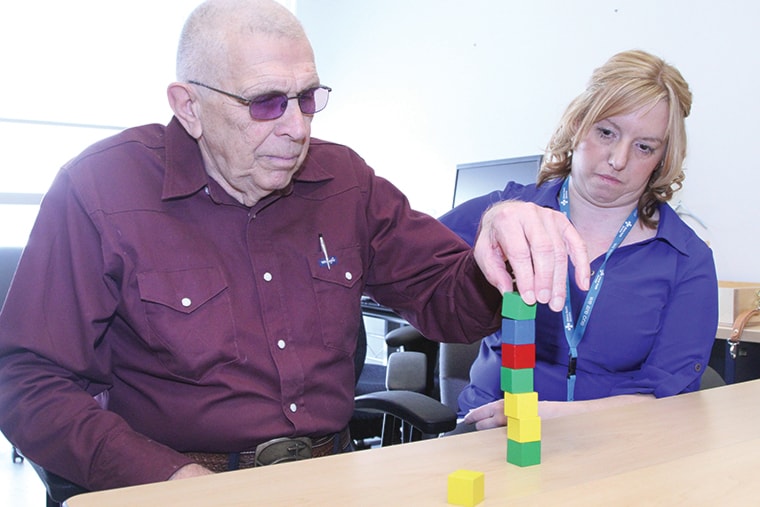Thanks to Alberta’s recently-launched Stroke Action Plan, Elwood Kirkpatrick of Red Deer spent only five days in the hospital following a stroke on Nov. 20.
He went on to receive his rehabilitation therapy in the comfort of his own home.
“It was lovely being at home. I couldn’t sleep well in the hospital. The girls who came to work with me were exceptional,” Kirkpatrick, 77, said.
“I made so much progress within just a month and now I can walk on my own, go up and down steps. My speech is getting better and ... thanks to the team’s encouragement and my wife, I feel more like my old self.”
The Stroke Action Plan aims to improve the quality of in-patient and community care for stroke survivors outside of Edmonton and Calgary.
The plan is ensuring already successful programs like Early Supported Discharge are now available in smaller urban sites and made more accessible for rural residents.
The early discharge program brings therapy into the home of those who have had strokes, like Kirkpatrick. It involves an in-home rehabilitation team of physiotherapists, occupational therapists, speech therapists, therapy assistants, nurses, recreational therapists and social workers. They each visit thoughout the week for a couple hours a day for six weeks.
This program has already reduced the average length of hospital stay by half for stroke patients in Edmonton and Calgary, where it was first piloted, says Alberta Health Services.
“Stroke units and early supported discharge services are very effective in reducing death, disability and the length of hospital stays so there’s a cost avoidance advantage as well as more hospital beds are freed up,” said Jeff Wright, an AHS occupational therapist and the Red Deer project leader.
The initiative is forecast to directly save $81,000 per year. That doesn’t take into account indirect savings, such as commutes and parking for patients, Wright added.
Red Deer was the first community selected to implement the Stroke Action Plan at the end of November. It has so far assisted 28 patients recover from strokes. The project is expected to roll out to Grande Prairie, Camrose, Lethbridge and Medicine Hat later this year.
Smaller centres such as Peace River, Brooks and Westlock will also receive enhancements of in-patient services for stroke patients, as well as improved stroke training and education as part of the plan.
“If the Stroke Action Plan program wasn’t here, those 28 patients would have either not received any rehab or they would have received rehab by coming into the out-patient department, where the availability of that service is very limited and they would only be able to come in a couple times a week,” Wright said. “The difference is in the intensity of the service and co-ordination as with this project you have a complete multidisciplinary team who has specialized expertise in stroke care.”
Kirkpatrick’s wife Betty said she is also extremely pleased with the program as the in-home rehabilitation saved them so much time and stress.
“They took care of arranging for the guard rails for the toilet and a walker and the chair for the bathtub. All we had to do was pick it up. It was easy,” she said. “And after a stroke, you don’t want to have to be walking across hospital parking lots for therapy sessions so this was much better for us.”
The Stroke Action Plan was developed by the Cardiovascular Health and Stroke Strategic Clinical Network, part of Alberta Health Services. The plan is one of nine projects being undertaken by various strategic clinical networks to improve patient experiences in Alberta and enhance standardized care delivery and outcomes.
rfrancoeur@www.reddeeradvocate.com
